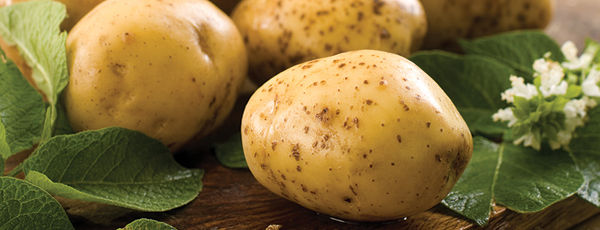Protect Potatoes from Early Blight and White Mold
May 1, 2017

Ultimate Balance
Growing high-quality potatoes requires ultimate balance and precision. Too much nitrogen late in the growing season reduces crop yields, but not enough early on suppresses tuber growth.
The same irrigation practices that promote healthy canopy growth to support tuber bulking – and increase yield – cause moist conditions that can lead to serious fungal disease pressures in potatoes.
Disease Threats
- Early Blight – Thrives in wet conditions and can lead to smaller potatoes, lower dry matter content and yield loss.
- White Mold – Thrives in moist conditions and excessive irrigation. White mold causes a rapidly spreading, cottony- white growth and might cause plant death. It also overwinters, potentially resulting in ongoing losses.
Disease Control
- Crop Rotation – The University of Idaho Extension recommends rotating crops grown in a particular field to prevent diseases from overwintering.
- Fungicides – Can help eradicate both diseases and should be applied preventively or at the first sign of Early blight symptoms.
- Monitoring – Vigilant monitoring and management of Early blight and White mold is needed as potato crops get closer to maturity and harvest.
Trial Data
Trial conducted by Miller Research, Idaho Commission. Luna Tranquility® helps reduce Early blight severity by 97% and helped improve yield by 10%, leading to an additional +$543 per cwt./A in profits.1
Percent Early Blight Severity Study

Yield Study

As a breakthrough systemic fungicide, Luna® controls White mold, Early blight and other problematic diseases so potatoes stay healthy from their first sprout to their place on a shelf. Make Luna a cornerstone of your fungicide program to consistently produce a high-quality potato crop.
Endura is a registered trademarks of BASF.
WORK CITED
1Average yield gain in dollars per cwt./acre is based on Potatoes 2015 Summary (September 2016); United States Department of Agriculture National Agricultural Statistics Service, page 18.